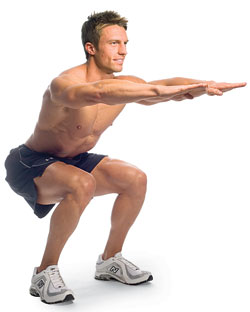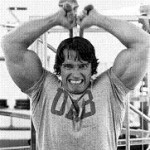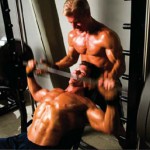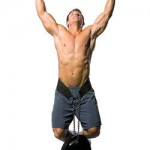Let’s begin by presenting the common claim about what type of workouts are required for putting on size:
Weight Training Workouts trump Bodyweight Workouts, so leave the latter for the rookies and let’s pump some heavy weight for real progress.
Pretty standard belief, wouldn’t you say? After all, if bodyweight workouts allowed us to achieve the muscle gain goals we are all looking for, what need would there be for gym memberships?
Although the basic premise of the above claim is indeed correct, it is certainly not without flaws. Flaws that, for almost anyone who comes to fixing them, can become a very valuable asset in their training regimen and enhance their results drastically.
When it comes to building muscle, the single most important aspect involves taxing that particular muscle to the point of muscle fatigue – or to its limit. At this point, your body has been signaled to make that muscle stronger and bigger, so that next time it can handle that same stress. If you feed your body correctly by eating above maintenance, your body will have the nutrients necessary to accomplish this task and grow this muscle. Then, the next time you come to the gym you’ll want to repeat this process by now taxing that muscle even more, so that it reaches its new limit, again signaling the body to make it grow. This is called progressive overload, and is absolutely essential (along with the diet portion mentioned above) for achieving the results you’re looking for.
The claim that weight training workouts are what allow you to gain size (by forcing your body to signal growth) stem from the belief that through the use of heavy weight, reaching this muscle fatigue comes faster. Since the level of resistance in a weight training workout is much higher (due to the manipulation of weight) than during a bodyweight workout, you can tax your body in a more time-efficient manner. After all, doing 8 reps on a dumbbell press is certainly going to be faster than doing 30 push ups (as long as we stick to the idea that one has outgrown their bodyweight strength).
It is precisely due to this concept that bodyweight workouts are practically scoffed at when it comes to helping an individual grow muscle. Weight training workouts are the only acceptable form of resistance, and the original claim made at the start of the article rings true. The problem is, that claim is a generalization that accepts one form of workouts over another without giving a chance to the hybrid of both.
Keeping muscle fatigue the highest priority when in the gym,reaching that state when training a muscle can come even faster when combining bodyweight workouts with weight training workouts. If the only downside of bodyweight workouts are that they do not provide enough resistance to tax a muscle (without performing a high amount of reps), we need only to place them during specific times during the workout to achieve their effectiveness.
For example, during a scheduled chest day you come into the gym to do your weight training workout. You start off with a heavy compound bench press, and move on to an incline dumbbell press. After every set of this incline press, you can do body weight chest dips to failure in the form of a superset (2 exercises done one after another without rest in between, the combination of which is considered just 1 set when finished). Once you’ve finished this superset, you can double up on chest flyes and decline push ups. Perhaps you’ve done your regular weight training workout and your chest is now pretty exhausted, verify this by doing push ups or chest dips to failure (or a combination of both). Reaching failure on these less-resistant exercises will only confirm you’ve reached muscle fatigue, and stimulate the growth necessary to progress with your body.
Often times, bodyweight exercises can be useful in the gym (if only) to gauge how hard you’ve hit that particular muscle group. Touched on in the latter half of the previous paragraph, when you’re done hitting a particular muscle group you can do bodyweight exercises to “finish off” whatever that muscle is still capable of. For example, after finishing back day in the gym, you can make sure you’ve reached muscle fatigue by going to do bodyweight pull ups or inverted rows. If you’re able to do sets of these, you’ve clearly got some energy left in the tank and you can finish off your back by hitting failure with a few sets. If you can’t do any, that’s a good indicator you’ve pushed yourself to the limit. People often train intensely with weights, but wind up leaving the gym with room for more. This use of bodyweight exercises can ensure you’re not falling short in this regard.
Bodyweight workouts have their place, even in the gym. The idea that your goals can only be achieved through weight training workouts is too black and white of a statement. Those who use both workouts efficiently together will ensure that they’re going to their limits each and every time they are in the gym, and speed progress that may have otherwise been lacking (or not moving at the speed it could). If you haven’t tried to incorporate bodyweight workouts into your weight training sessions in the gym, give it a go, there’s nothing to lose. Know when to add them in, and exhaust your muscle groups with the power of these hybrid workouts. You won’t be disappointed, as long as your diet is also in check. For more on bodyweight exercises that can help you in your quest, check out our Calisthenics Workouts article. Good luck!
Incoming search terms:
- signalling workout
- signaling workout
- signaling workout method








2 Comments »